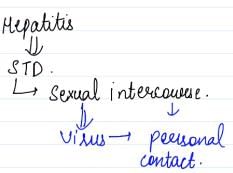Test: Why Do We Fall Ill- 2 - Class 9 MCQ
20 Questions MCQ Test Chemistry for Class 9 - Test: Why Do We Fall Ill- 2
Antibiotics do not work against viral infections because
Which one of the following is not a bacterial disease?
The set of diseases which spread through sexual contact as well as through placenta to the foetus are
Viruses, which cause hepatitis, are transmitted through
Cells of our body involved in fighting against infections, are
Which one of the following diseases is caused by protozoans?
Which of the following can make you ill if you come in contact with an infected person?
The process in which the active immune system employs many cells to the affected tissue, is called
Antibiotics used in treatment of bacterial and fungal diseases are
Providing living conditions that are not crowded, can help to prevent
DPT vaccine is given to develop immunity against _______ disease.
|
14 videos|60 docs|47 tests
|



















